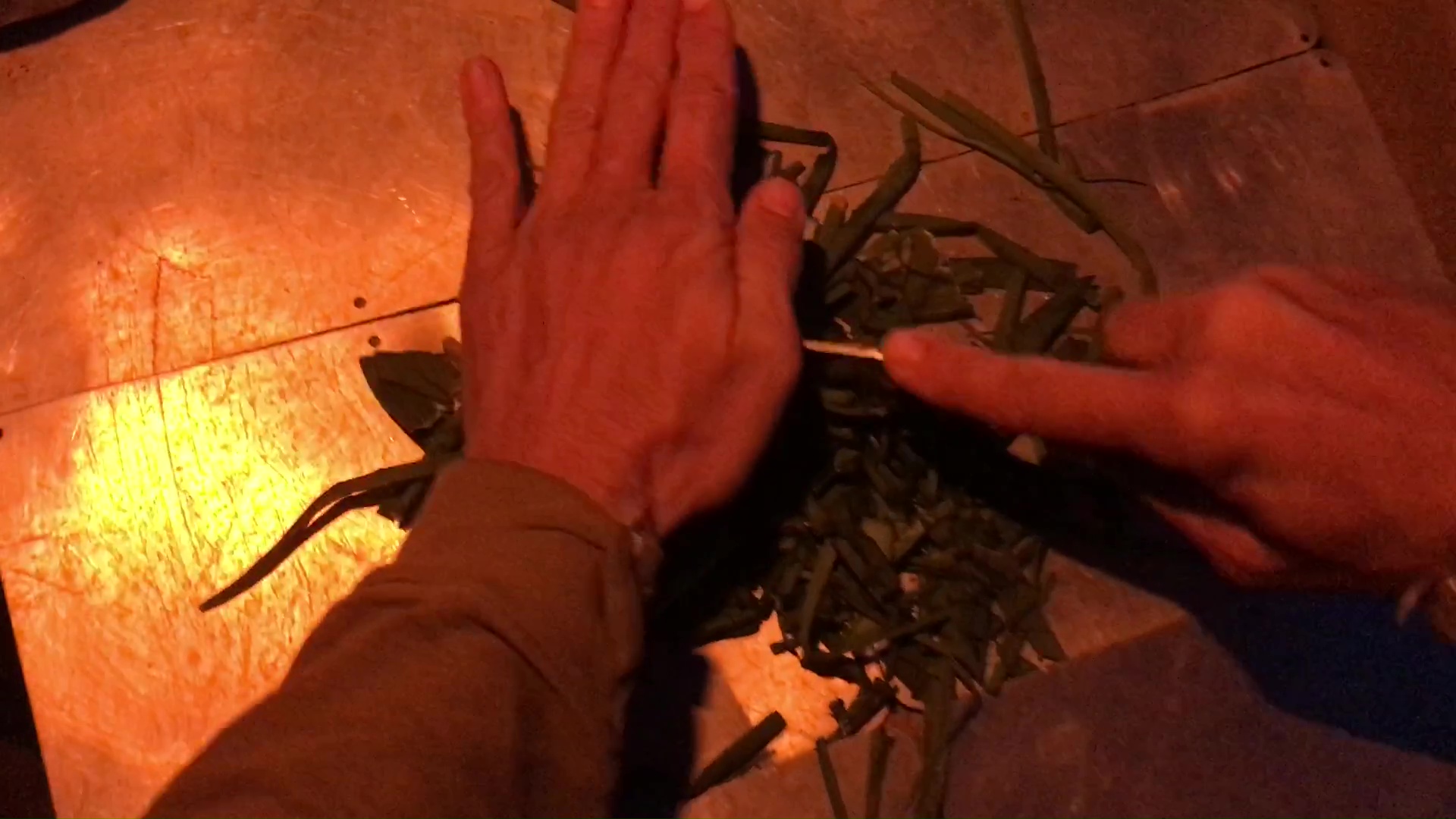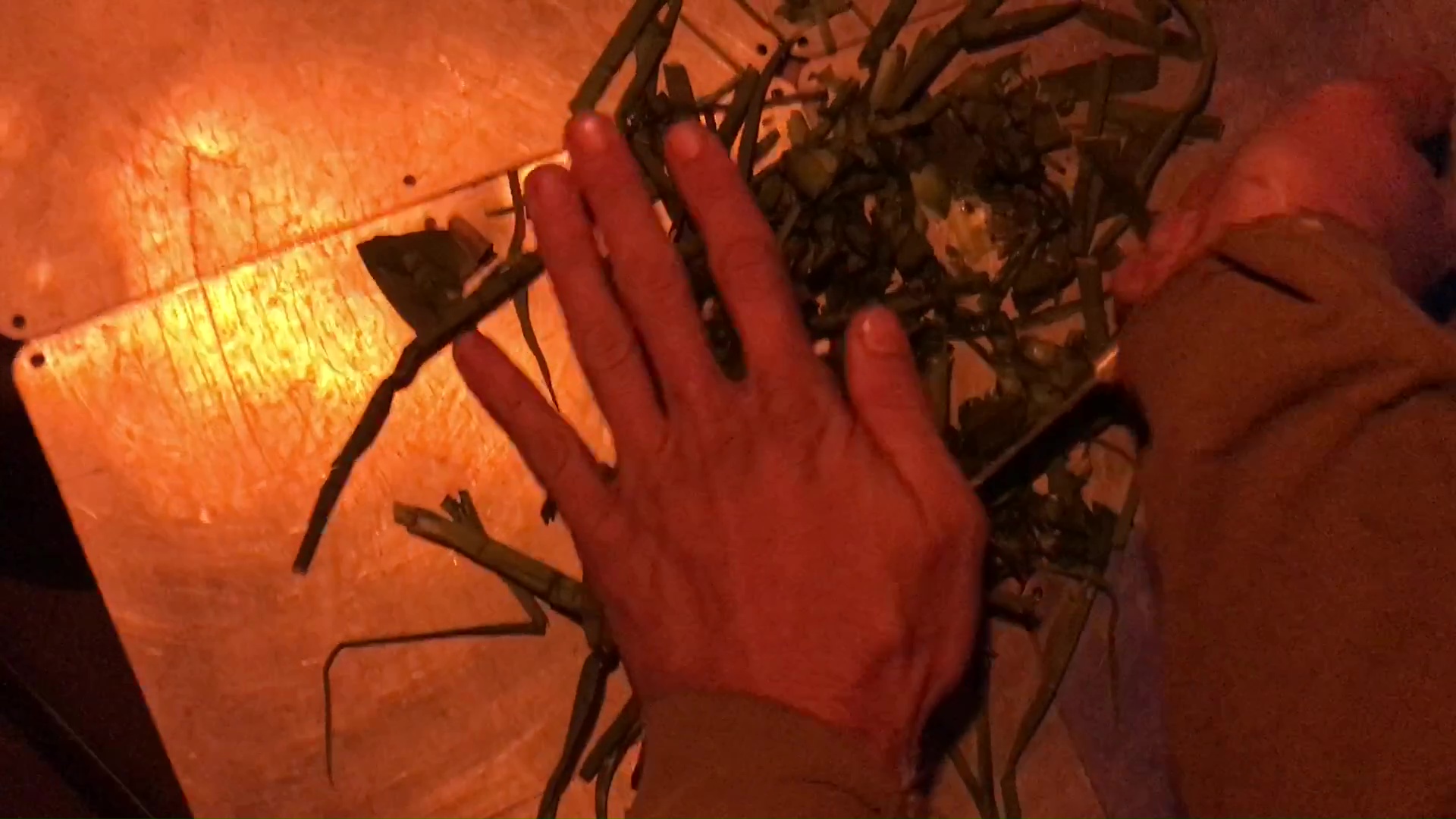
Knife Chopping Herb Harvest Using Flat Support Hand And Pointer Grip

Knife Chopping Herb Harvest Using Flat Support Hand And Thumb Guard Grip
Knife Chopping Herb Harvest Using Flat Support Hand And Alternating Pointer Grip With Thumb Guard Grip
I was taught two main methods of safely wielding a knife in combative arts training. The names given to each knife holding type were in a foreign language so I've decided to adapt and distinguish them into more descriptive titles.
The first type is what I'll call the "pointer grip" as the index finder of the hand holding the knife is pointed out straight and secures top of the knife opposite the sharpened blade. Using an "X" stroke pattern, you can imagine that you're drawing an "X" in the air in front of you using downward strokes.
To make an "X" in the air using upward strokes, you invert the knife so it's pointing downward in your closed fist with blade facing forward in line with the middle knuckles, then apply the thumb securely at the end of the knife handle.
With these two grips, you can trace the lines of the "X" in numerous patterns such as moving up and down each line of the "X", or moving down each line, then up each line separately. It's awkward at first but after a while it becomes muscle memory and flows very efficiently at angles beyond the “X” training pattern.
Tactically speaking, slashing strokes aimed at near skin surface level blood vessels are more advantageous and efficient than most stabbing strokes. The speed, agility, retractability, and broad target surface of slashing strokes on the "X" pattern is preferred to the risks associated with attempting to stab into a small target zone that may dull or snag the knife, or more easily be deflected or blocked. There is a time and place for everything, and stabs are to be trained along with slashes, however in terms of the emphasis in training, I was taught to slash the "X" as a rule, and stab as an exception.
Be warned, it's critically important to use wooden or custom designed bladeless unsharpened training knives when training with others or when developing combative knife wielding skills alone as a novice.